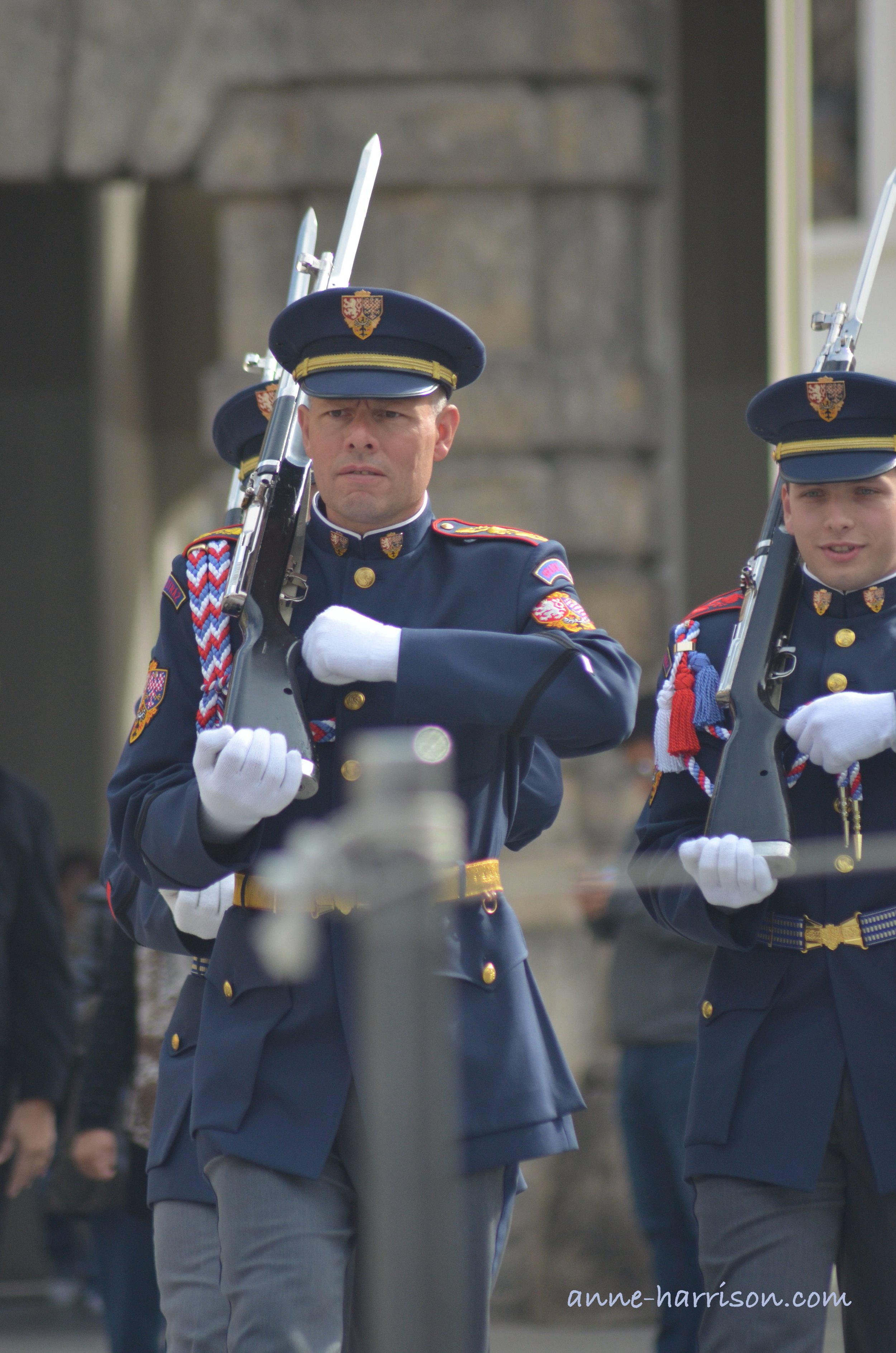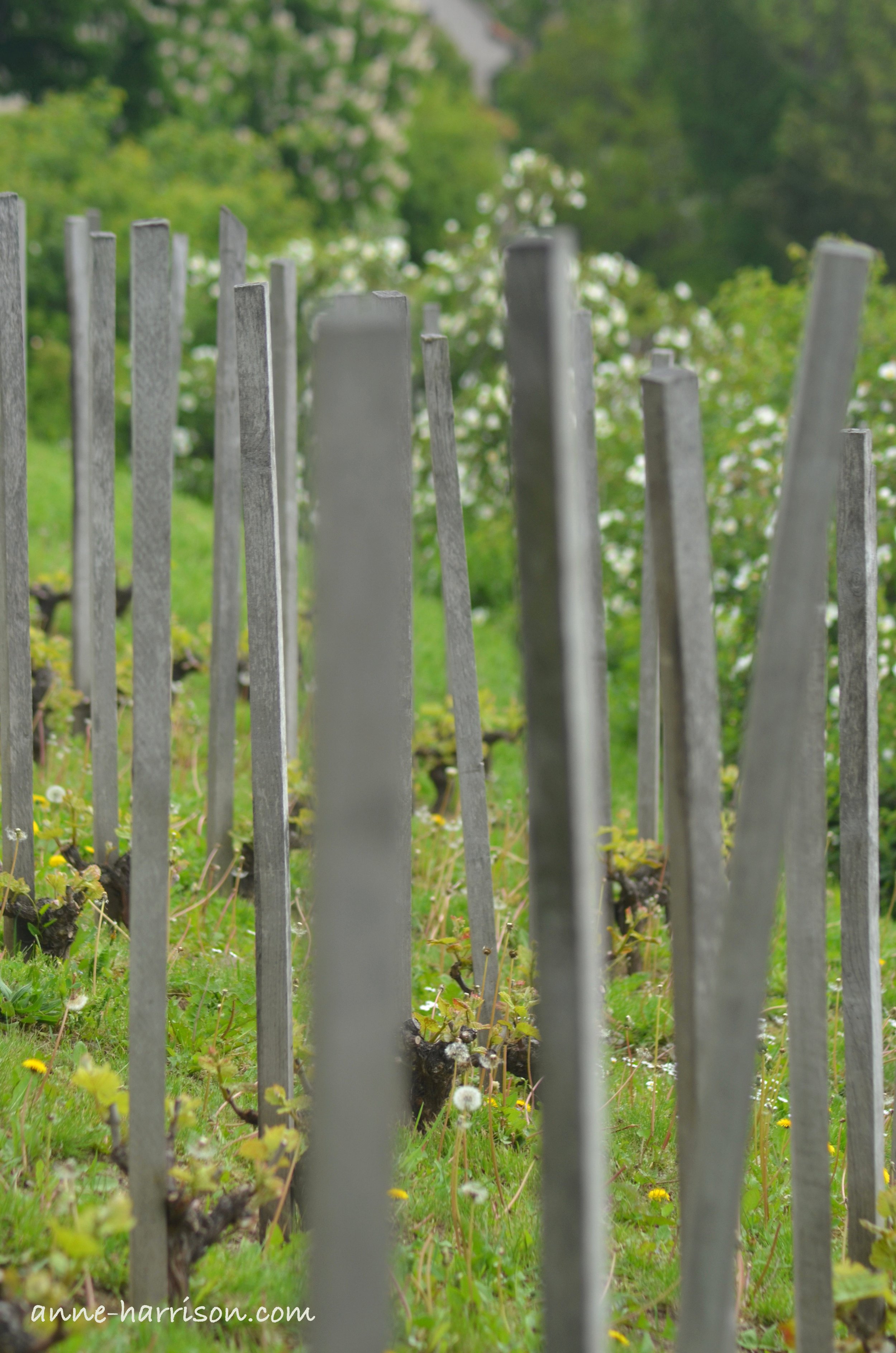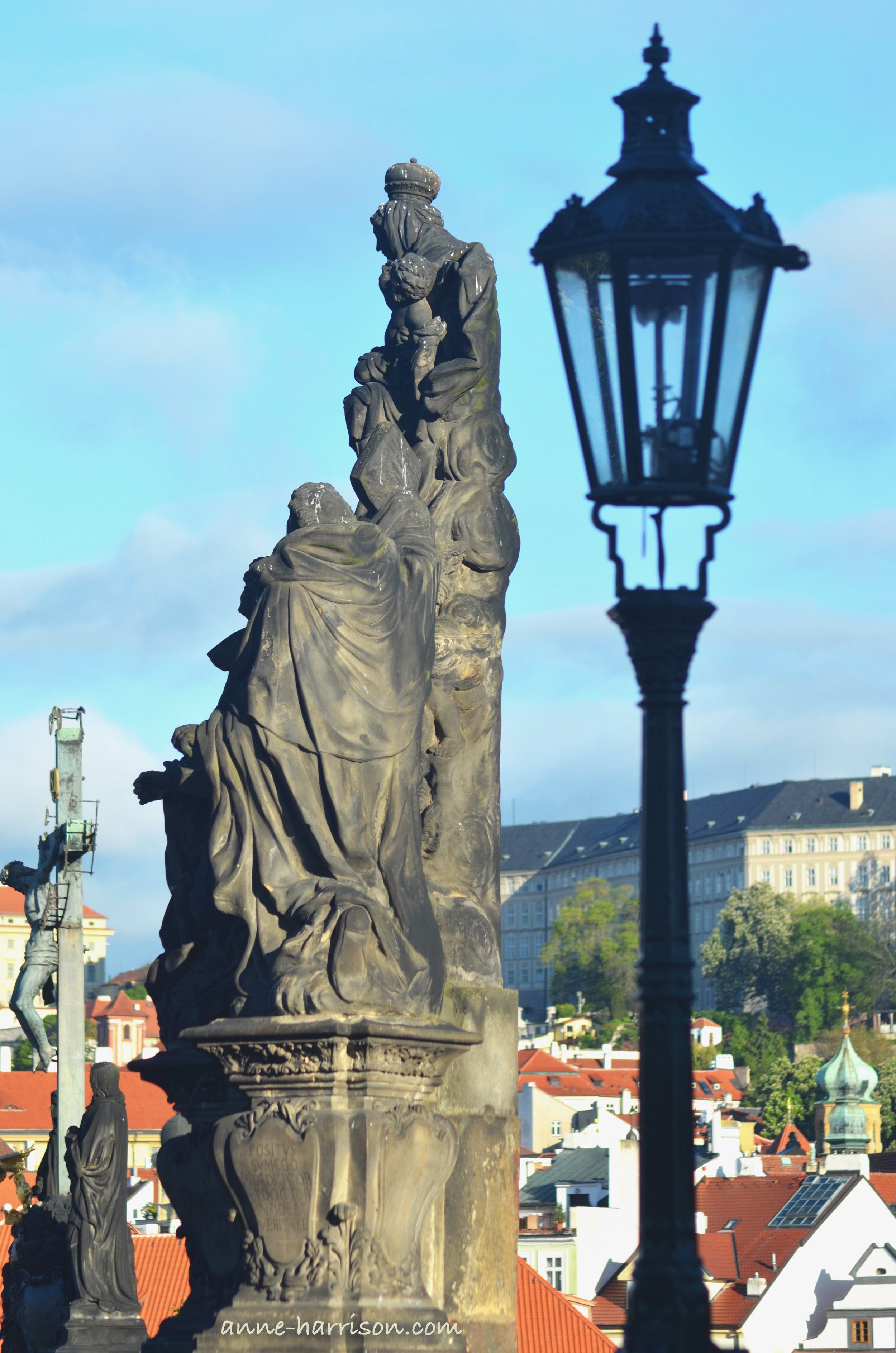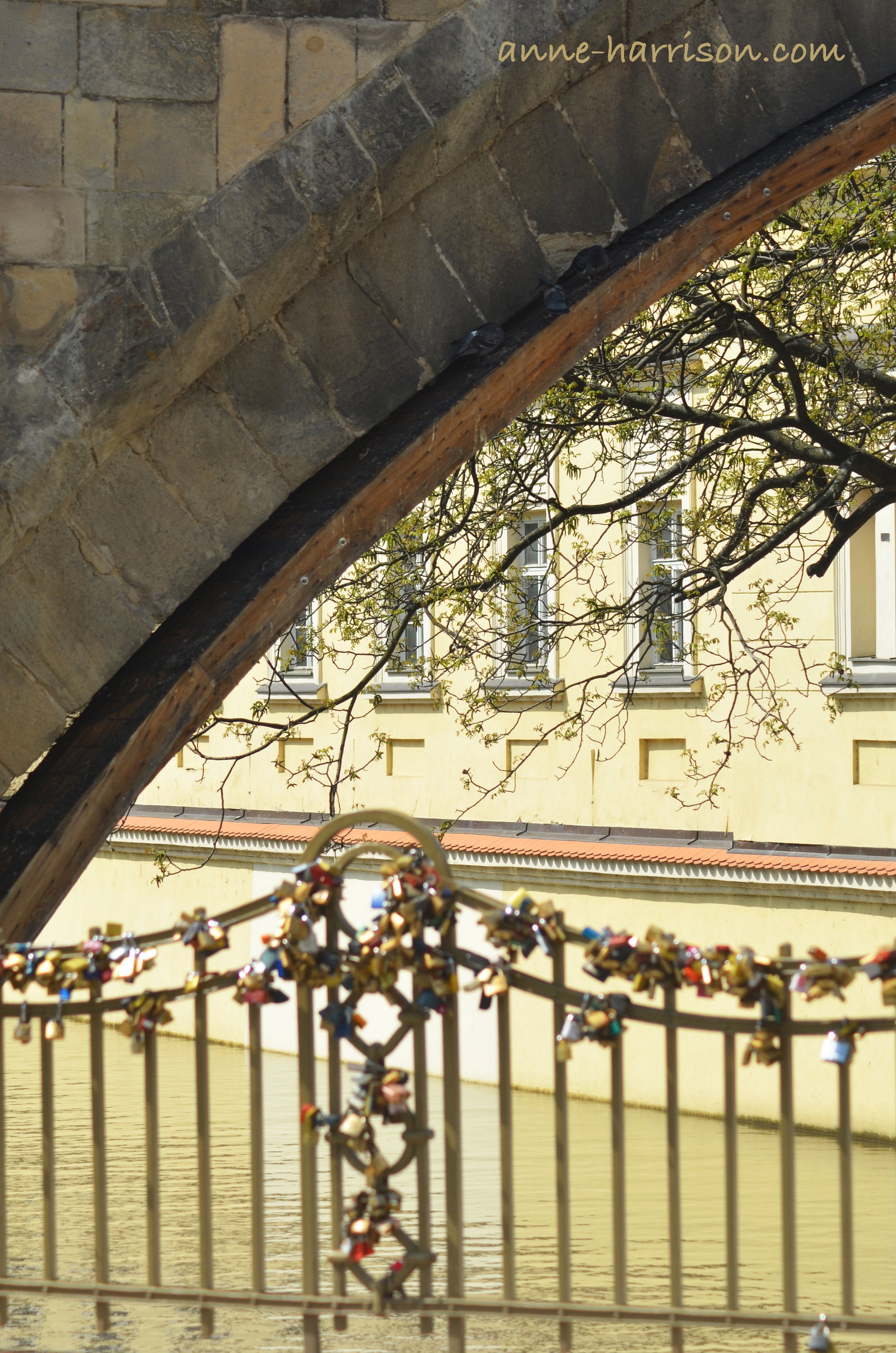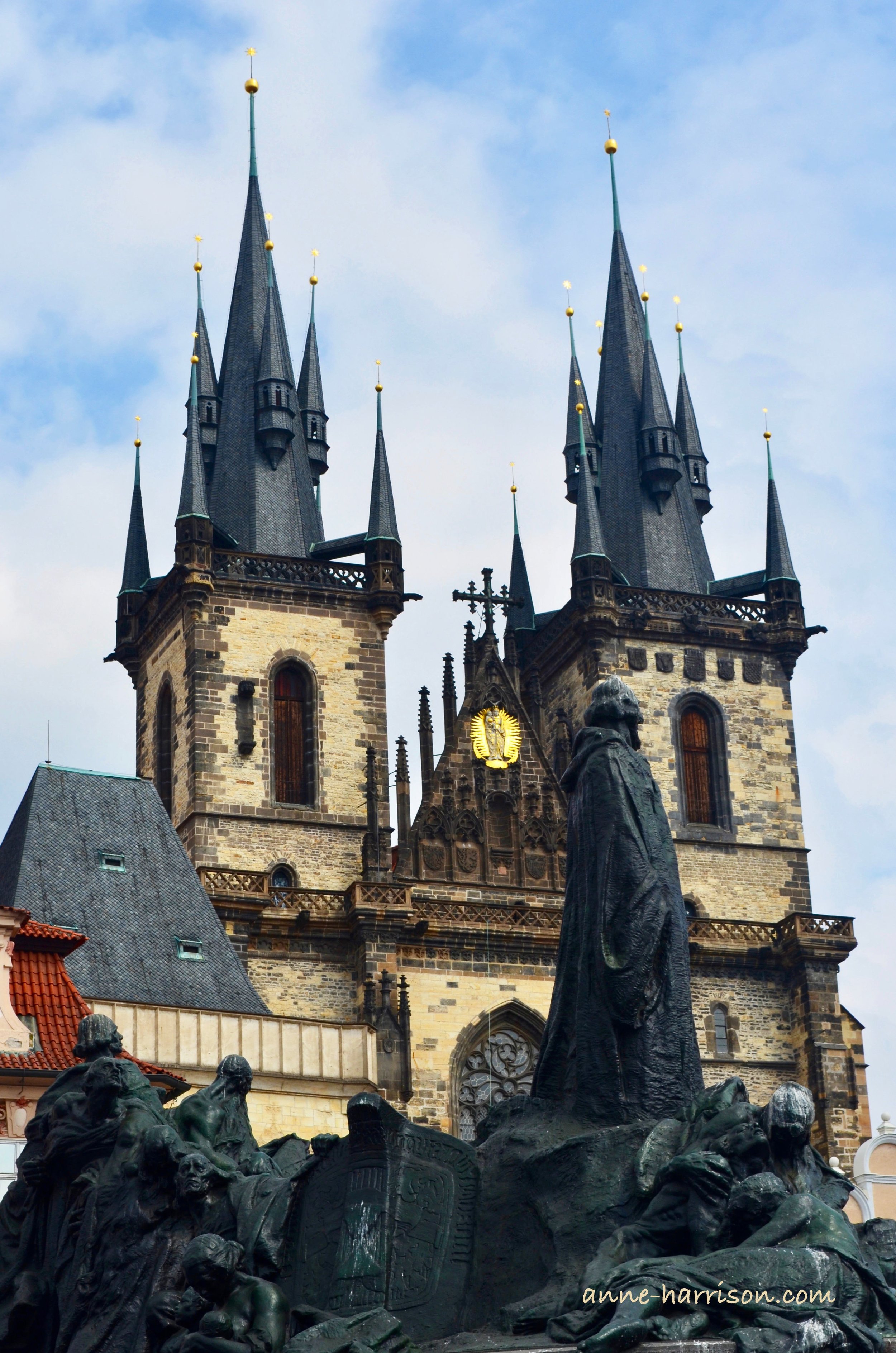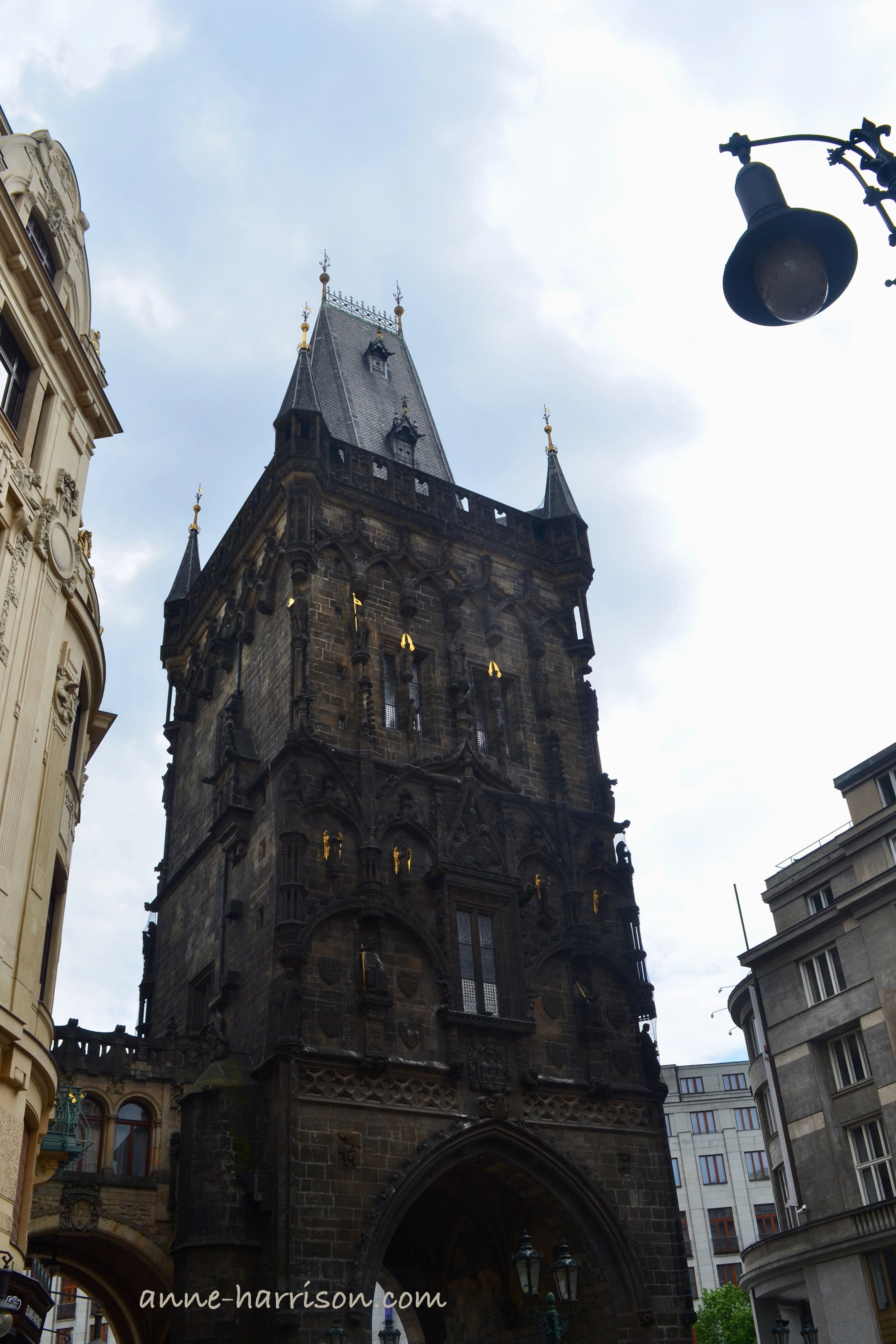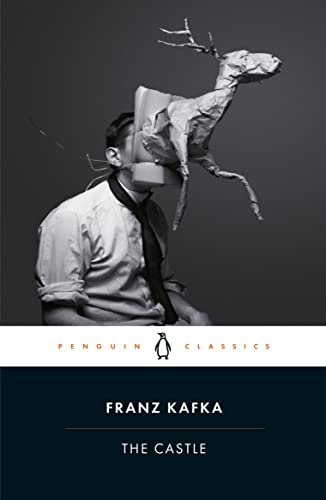Prague and my morning Becherovka
Ah, Prague, Kafka and his good soldier! (c) A. Harrison
My guide paused in a small park, just below Prague Castle. After watching the changing of the guard, (with the soldiers wearing uniforms straight from A Nutcracker), he’d led us down the hill past beautiful white roses and a vineyard planted by Good King Wenceslas.
I walked in a fairytale.
Tulips and azaleas announced the coming of spring, but at this early hour the air was freezing. Our guide pulled from his backpack a green bottle of Becherovka. A combination of alcohol, herbs and spices, for most it is Prague’s national drink. Only two people know the secrets of its making. Becherovka seems to be drunk anytime from breakfast to warm the body for the day, through to aperitifs or a night cap. Its medicinal qualities are apparently wide-ranging. Standing below Prague Castle, the tastes of cinnamon, honey and cloves brought me memories of Christmas. At 38% alcohol, a nip in the windy park most definitely warmed the cockles
Prague Castle (c) A. Harrison
Our guide then took his willing followers down through Malá Strana, or the Little Quarter. The area was founded in 1257 by King Ottokar II of Bohemia. (King Wenceslas lived from 907 - 935.) Today Malá Strana is a world of cobblestone lanes and small shops. Signs hung over the streets. One lane is so narrow it had a street light for pedestrians, for it is not wide enough for them to pass.
A bridge arching across a small arm of the river had been covered in padlocks - one of the many love-lock bridge sseen the world over. Nearing the Charles Bridge we passed an English and foreign language bookstore, Shakespeare and Sons, reminiscent of Paris’ Shakespeare and Co. (Note to self: come back when not with a tour group, and lose myself in there for a while.)
And so back to Charles Bridge where the crowds were beginning to gather for the day, and the Tower of Sauron peeped over the skyline. (Some call it the Church of Our Lady of Tyn, but as the towers loom over the skyline it's impossible not to be transported to Mordor.)
Another day in Prague.
The Church of Our Lady of Tyn, and the Charles’ Bridge Tower Prague - welcome to Mordor! (c) A. Harrison

The Literary Traveller
Like much of Kafka's writings, The Castle can prove an acquired taste, but Prague is the perfect place to tackle both Kafka and his works. Prague is Kafka's city, and a museum dedicated to him is in the Malá Strana, or the Little Quarter.
The novel's protagonist is known only as K; he arrives in a village, and the novel is spent as he tries to gain access to the castle from which the place is governed. It is a surrealistic work, emphasised by the fact Kafka died of TB before finishing it.
The people of the castle live in a remote world of 'perfect' bureaucracy; they govern the town below, yet do not physically interact with the townsfolk. K enters a world of unknown rules and laws, of solitude and alienation and unexpected companionship. Like his earlier works, the Castle explores our alienation from an omnipotent yet unseen authority, which is forever protected by a bureaucracy which runs to its own convoluted, illogical and ultimately unknowable rules.
Enjoy my writing? Please subscribe here to follow my blog. Or perhaps you’d like to buy me a coffee? (Or a pony?)
If you like my photos please click either here or on the link in my header to buy (or simply browse) my photos. Or else, please click here to buy either my poetry or novel ebooks. I even have a YouTube channel. Thank you!
Plus, this post contains affiliate links, from which I (potentially) earn a small commission.


